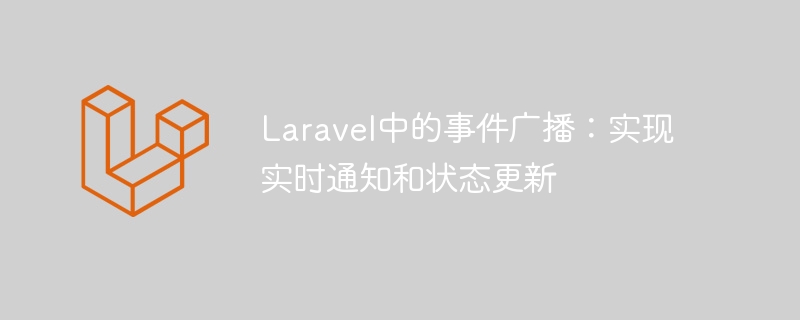

Event Broadcasting in Laravel: Implementing Real-time Notifications and Status Updates
Introduction:
In modern web application development, real-time notifications and status updates have become increasingly important needs. Imagine that in a blogging application, when there are new comments or likes, we want to notify users immediately to provide a better user experience. The Laravel framework provides a very powerful feature to handle this requirement, which is event broadcasting. In this article, we will learn how to use Laravel's event broadcast feature to achieve real-time notifications and status updates.
The following is an example of creating a comment event and corresponding listener:
1 2 3 4 5 6 7 8 9 10 11 12 13 14 15 16 17 18 19 20 21 22 23 24 25 26 27 28 29 30 31 32 33 34 35 |
|
In the above code, the NewComment event implements ShouldBroadcast Interface, which instructs the Laravel framework that the event needs to be broadcast. The constructor of the event accepts a comment object as a parameter and assigns it to the $comment property. The broadcastOn method returns a Broadcasting channel instance, which means that the event needs to be broadcast in the comments channel.
The following is an example of a listener that handles comment events:
1 2 3 4 5 6 7 8 9 10 11 12 13 14 15 16 17 18 19 20 21 22 23 24 |
|
In the above code, the SendCommentNotification listener implements the ShouldQueue interface, indicating that the Listeners can be put into a queue and executed asynchronously. In the handle method, we can write logic for handling events, such as sending emails to notify users, etc.
Open the app/Providers/EventServiceProvider.php file and add the following code in the $listen array:
1 2 3 4 5 |
|
The above code means When the NewComment event occurs, the SendCommentNotification listener will be called for processing.
redis by default as the event broadcast driver. Open the .env file and make sure the following configurations are set correctly: 1 |
|
1 2 3 4 5 6 7 8 9 10 11 12 13 14 15 16 17 18 19 20 21 22 23 24 25 |
|
In the above code, we first create a comment object and pass it to the event helper function Trigger the NewComment event and pass the comment object as a parameter. In this way, once the comment is created successfully, the Laravel framework will automatically broadcast the event to the specified channel (in our case, the comments channel).
Echo that can help us implement this function. First, we need to introduce the relevant JS files into the front-end page: 1 |
|
Then, in the JavaScript code, we can listen to the event broadcast in the following way:
1 2 3 4 5 |
|
In the above code , we listen to the specified channel (in our example, the comments channel) through the Echo.channel method. When calling the listen method, we need to specify the event type to listen to, here is NewComment.
In the listen method, we can write the logic to handle the received events, such as displaying the content of new comments on the page.
Conclusion:
By using Laravel's event broadcast function, we can easily realize the needs of real-time notification and status update. Just create the corresponding events and listeners, and then trigger the events in the controller. By configuring event broadcasting and listening for events on the front-end page, we can implement real-time notification and status update functions in the application. Hope this article is helpful to you!
The above is the detailed content of Event Broadcasting in Laravel: Implementing real-time notifications and status updates. For more information, please follow other related articles on the PHP Chinese website!




